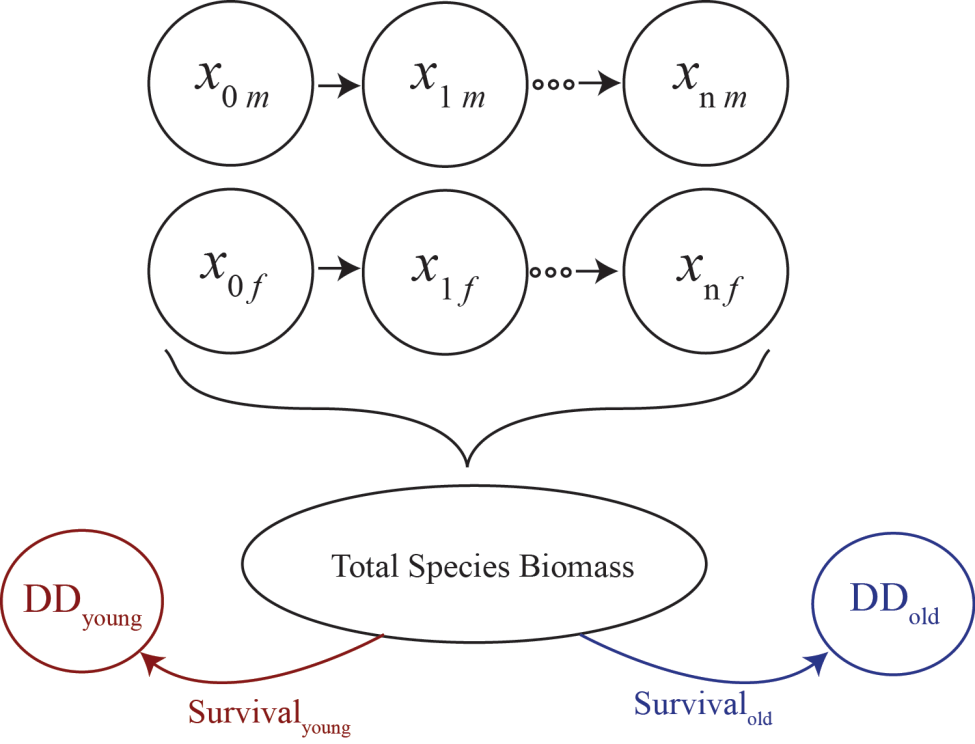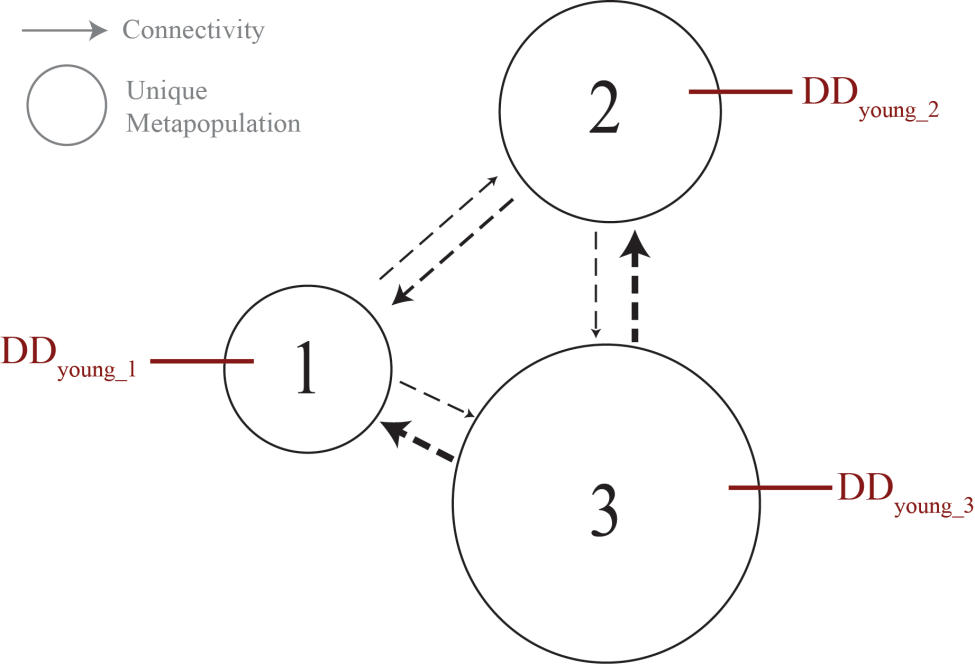Adjusted Leslie Matrix
Leslie variables:
The following is a two-sex Leslie Matrix model expressed in terms of age-sex variables, time, life history survival, and natality parameters, where the female component of the model can be expressed as a matrix equation and the male component either requires doubling the dimension of the generalized Leslie matrix equation or augmenting the above equations with equations shown here.
Adjusted Leslie Matrix Equation
$$
\begin{eqnarray*}
x_{1m}(t+1) & = & s_{0m} \sum_{i=1}^{n} b_{im}x_{if}(t) \nonumber \\
x_{i+1 \, m}(t+1) & = & s_{im} x_{im}(t) \ \ i=1,\dots, n-2 \\
x_{n \, m}(t+1) & = & s_{n-1 \, m} x_{n-1 \, m}(t) + s_{n m} x_{nm}(t) \nonumber
\end{eqnarray*}
$$
Density-Dependence Parameters
In terms of the aggregated population index:
$$
\begin{equation*}
B_{i\ell}(t) = \sum_{j=1}^{n} \sum_{\ell = f,m} w_{ij\ell} x_{j\ell} (t),
\end{equation*}
$$
and corresponding case specific DD parameter, K, employs the DD-effects function:
$$
\begin{equation*}
\phi = \frac{1}{1 + \left(\frac{B}{K} \right)^2}
\end{equation*}
$$


